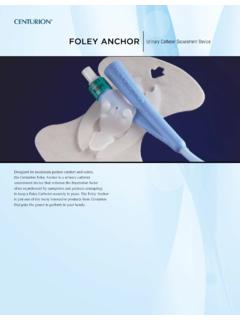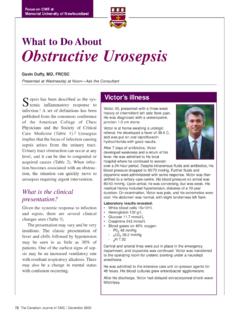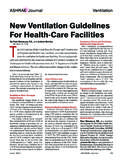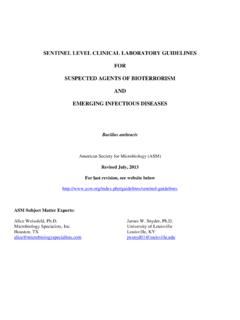Transcription of Michigan Maternal Mortality Surveillance
1 Michigan Department of Health and Human Services Michigan Maternal Mortality Surveillance EXECUTIVE SUMMARY JANUARY 2018 Maternal Mortality Executive Summary 1 | P a g e Every Death Tells a Story Every woman who dies during or after pregnancy has a story to tell, a story that can teach us how to prevent other Maternal deaths. Women who die are not necessarily typical and may be of any age, have multiple or no risk factors, have had adequate or no prenatal visits, be from a rural area or a major city, be married or single, having her first baby or her sixth. Michigan s Maternal Mortality Surveillance (MMS) Committee has learned that approximately 50% of Maternal deaths are preventable either by the health care team, the patient and her family, or access to family planning and other medical health care services. Increasingly, the MMS Committee reviews deaths due to drug overdoses, mental health conditions, and critical social issues, such as domestic violence.
2 In all cases of Maternal death, the MMS Committee unravels a story that has lessons for communities, policy makers, physicians, and other health care leaders. We can create a safe Maternal climate in Michigan if we listen to the women we have lost. Background The death of a woman during pregnancy, at delivery, or within a year after the end of her pregnancy is a tragedy for her family and for society. Sadly, approximately 80 women die each year in Michigan during this period. As the public health authority in the state, the Michigan Department of Health and Human Services (MDHHS) investigates Maternal deaths via the Michigan Maternal Mortality Surveillance (MMMS) program. The MMMS program helps identify underlying factors associated with Maternal deaths and develops policy recommendations to reduce Maternal Mortality and eliminate the unacceptable disparity in disadvantaged racial and social economic groups. The Maternal death review process was organized in Michigan in 1950 as a collaborative effort between the former Michigan Department of Community Health (MDCH), the Committee on Maternal and Perinatal Health of the Michigan State Medical Society (MSMS), and the chairs of the Departments of Obstetrics and Gynecology of the medical schools in Michigan .
3 Today, Michigan s Maternal Mortality review is a state-level structured process by which two multidisciplinary committees identify and review cases of Maternal death that occur during pregnancy, at delivery, or within one year of pregnancy. The medical review committee is focused on reviewing medical causes of death in pregnant and postpartum women, and the injury review committee focuses on reviewing accidental causes of death including substance-related deaths, homicides, suicides, and motor vehicle accidents. The medical and injury committees are made up of multidisciplinary representatives from around the state in fields including public health, obstetrics and gynecology, Maternal -fetal medicine, nursing, midwifery, forensic pathology, mental health and behavioral health. The Michigan Public Health Code and other state laws facilitate access to medical records, ensure confidentiality, and protect case information, committee members, review proceedings, and findings from subpoena and legal actions.
4 With the support of these laws, the review committees have access to multiple sources of information that provide a deeper understanding of the circumstances surrounding each Maternal death and allow them to develop action recommendations to reduce the occurrence of preventable future deaths. The newest state law, Public Act 479 of 2016 was signed on January 5, 2017 and makes Maternal death reporting in Michigan a mandatory process to capture all Maternal deaths that occur in the state. The new law states that a physician or an individual in charge of a health facility who is present for or is Maternal Mortality Executive Summary 2 | P a g e aware of a Maternal death shall submit information regarding that death at the time and in the manner specified or approved by the department for inclusion in the health information system. This law aims to improve the data quality of Maternal deaths in the state and brings awareness to the importance of the death of a woman during or within a year of pregnancy.
5 Michigan s Maternal Mortality review committees make recommendations for interventions and prevention strategies to prevent future deaths. These recommendations apply to a wide array of fields, including prenatal health care, social work, psychiatry, emergency care, health care, and advocacy. They are increasingly geared to also include improved understanding of the impacts of social, economic, cultural and environmental factors on health status. Recommendations for implementing strategies that address equity are particularly relevant for eliminating Michigan s pronounced racial disparities in Maternal death rates. Maternal Mortality Surveillance is needed to identify and address the factors contributing to poor pregnancy outcomes for women. Though it requires an investment of time and resources, a structured death review process can be a powerful facilitator of state systems change to improve the health of women before, during, and after pregnancy.
6 Maternal Mortality reviews offer an opportunity for reversing Michigan s high rate of Maternal Mortality , particularly for African American women, and improving Maternal outcomes for all mothers in our state. Data Maternal deaths are classified nationwide into two distinct categories: pregnancy-associated deaths and pregnancy-related deaths: Pregnancy-associated death: The death of a woman while pregnant or within one year of pregnancy, irrespective of cause. Pregnancy-related death: The death of a woman while pregnant or within one year of termination of pregnancy, irrespective of the duration and site of the pregnancy, from any cause related to or aggravated by her pregnancy or its management, but not from accidental or incidental causes. Since national Surveillance of pregnancy-related deaths was initiated by the Centers for Disease Control and Prevention (CDC) in 1986 through the Pregnancy Mortality Surveillance System (PMSS), the number of reported pregnancy-related deaths in the United States has steadily increased from deaths per 100,000 live births in 1987 to deaths per 100,000 live births in It is unclear why pregnancy-related Mortality has increased in the United States, but it is likely that the use of computerized data linkages, changes in the way causes of death are coded and the addition of a pregnancy checkbox on the death certificate have improved identification of pregnancy-related deaths in states.
7 Studies have also shown that an increasing number of pregnant women in the United States have serious chronic health conditions such as hypertension, diabetes, and heart disease. These conditions may increase the risk of death for pregnant Maternal Mortality Executive Summary 3 | P a g e The most common cause of pregnancy-related death in the United States from 2011-2013 was from cardiovascular disease (15%). Other common causes of death include other medical non-cardiovascular disease (14%), infection or sepsis (13%), hemorrhage (11%), and cardiomyopathy (11%).1 Michigan has been consistently working on improving data quality and timely case review in order to compare trends nationally and reduce Maternal deaths. Pregnancy-related Mortality rates in Michigan have seen similar trends compared to national data. From 2008 to 2011, pregnancy-related Mortality rates increased from per 100,000 to per 100,000 live births.
8 However, pregnancy-related deaths in Michigan are starting to decrease, reaching a low of deaths per 100,000 live births in 2012 (Division for Vital Records & Health Statistics, MDHHS, 2008-2011). Persistent racial disparities exist in pregnancy-related deaths in Michigan . Black women die at a rate more than times higher than Non-Hispanic White women ( deaths compared to deaths per 100,000 live births; Division for Vital Records & Health Statistics, MDHHS, 2010-2012). Michigan strives to address social determinants of health to improve health outcomes and ensure health equity. Recommendations and Ongoing Activities The overall goal of a Maternal Mortality review committee is to identify medical, systems and patient issues that can be addressed to improve women s health. The last Interdisciplinary Committee meeting was held on September 26, 2017. The members attending were asked to review, discuss and approve the recommendations suggested by both the medical and injury committees.
9 To enhance effectiveness and the ability to implement, recommendations were very focused and limited in number. Steps to address the opioid epidemic s impact on women and children were stressed, as were steps to reduce preventable pregnancy-related Maternal Mortality . The following recommendations were endorsed: 1. We need to support public education regarding the dangers of prescription drug interactions, specifically drugs most often misused. 2. We need toxicology reports on all deaths that are potentially substance related. 3. We need to educate providers regarding substance abuse treatment resources and advocate for access for pregnant and postpartum women. 4. We need Medicaid and private insurance covered immediate postpartum LARC, along with professional and public education concerning how to use it most effectively. 5. We need the MI Board of Licensed Midwifery to enhance education and coordination with midwives attending out of hospital births on timely referral of women to hospitals as appropriate.
10 6. We need to work with Internists and Family Physicians concerning postpartum and long-term cardiovascular and metabolic risk for women with preeclampsia and gestational diabetes. One of the most significant programs to emerge from previous MMMS recommendations is the MI-AIM project, the Michigan public-private partnership initiative that is part of a major country-wide program to reduce preventable Maternal Mortality and severe Maternal morbidity. In Michigan , the focus is on improving care for Maternal hemorrhage and hypertension, as well as increasing interpregnancy interval to prevent high-risk pregnancies. Maternal Mortality Executive Summary 4 | P a g e References 1. Centers for Disease Control and Prevention. Pregnancy Mortality Surveillance System. Available at
















